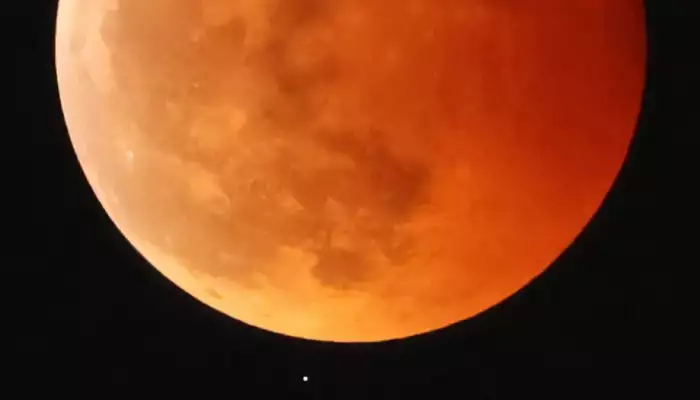
Muscat: It will be a celestial treat on Sunday for stargazers in Oman and several parts of the world as they can witness a spectacular astronomical event, a total lunar eclipse.
The celestial event will begin with a penumbral eclipse at 7:28 p.m. Muscat time. The partial eclipse phase will follow at 8:27 p.m., leading up to the moment when the moon fully enters Earth’s shadow at 9:31 p.m.
The total eclipse will reach its peak at 10:11 p.m. and continue until 10:53 p.m., when the moon will start to emerge from Earth’s umbra. The partial phase will end at 11:56 p.m., with the penumbral eclipse concluding at 12:55 a.m. after midnight. In total, the eclipse will last for 5 hours and 27 minutes, with the full eclipse phase lasting 1 hour and 22 minutes.
The phenomenon, popularly known as a “Blood Moon,” occurs when the Sun, Earth, and Moon align, causing Earth’s shadow to fall on the Moon and cast it in a deep red hue. The sight of the “Blood Moon” has both intrigued and terrified humankind for centuries.
Asia, including Oman, will have the best viewing opportunities, while the full eclipse will also be visible on the eastern edge of Africa and in western Australia.
Europe and most of Africa will only get a partial view of the phenomenon early in the evening as the moon rises, whereas people in both continents of the Americas will not be able to see it entirely, missing out on the spectacular celestial event.
Why don't we see total lunar eclipses every month?
Total lunar eclipses do not occur every month because the moon orbits the Earth at a 5-degree tilt. So, while our natural satellite does move behind the planet every four weeks or so, it remains at such an angle that light from the sun still reaches it directly.
Lunar eclipses happen when the moon is full and directly opposite the sun, with the Earth directly in-between, blocking the path of light.
They can be viewed from anywhere on the planet where night has already fallen. Solar eclipses, on the other hand, can only be seen from specific locations. And total lunar eclipses last longer than total solar eclipses because the shadow the Earth casts is bigger than that of the moon.
What's the difference between a lunar eclipse and a solar eclipse?
Lunar and solar eclipses occur with equal frequency — about twice a year. And both are fascinating. Some people — known as "eclipse chasers" — travel the world to get the best view. Usually, solar eclipses draw bigger crowds. We've all seen those sci-fi-like images of hordes staring intently up at the sky, wearing futuristic-looking protective eyewear (because you should never look directly at the sun).
Lunar eclipses, on the other hand, seem to rank lower in the imagination. Perhaps that has to do with the fact that the only time you can see them is when it's dark, when lots of people are already in bed... or clubbing.
But total lunar eclipses are special events for the spectacular effect they have on the moon, dousing it in a blood-red or orange light. And the best thing is you don't need special eyewear to view one. On a clear night, you won't even need a telescope. You can see all there is to see with the naked eye.